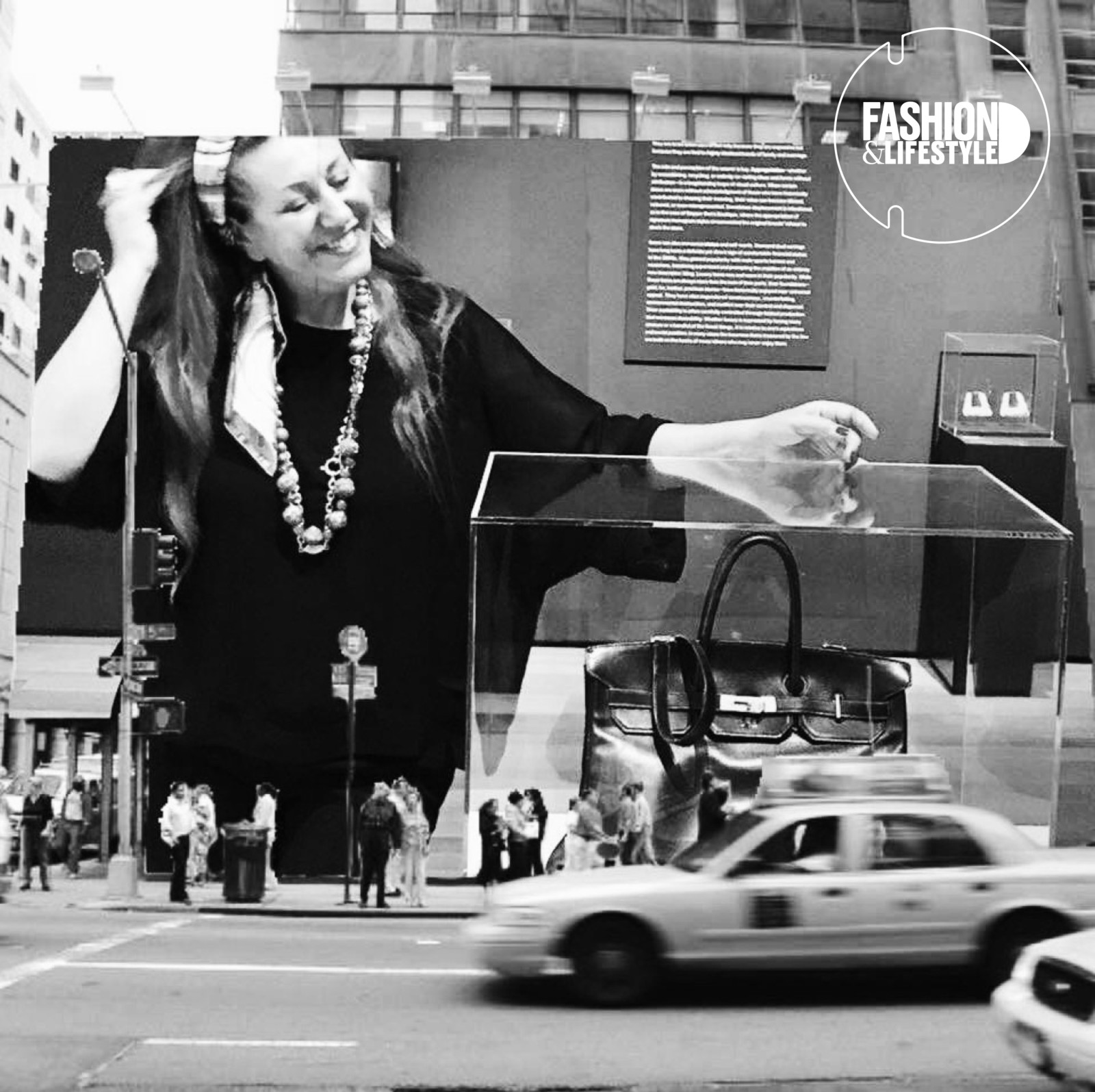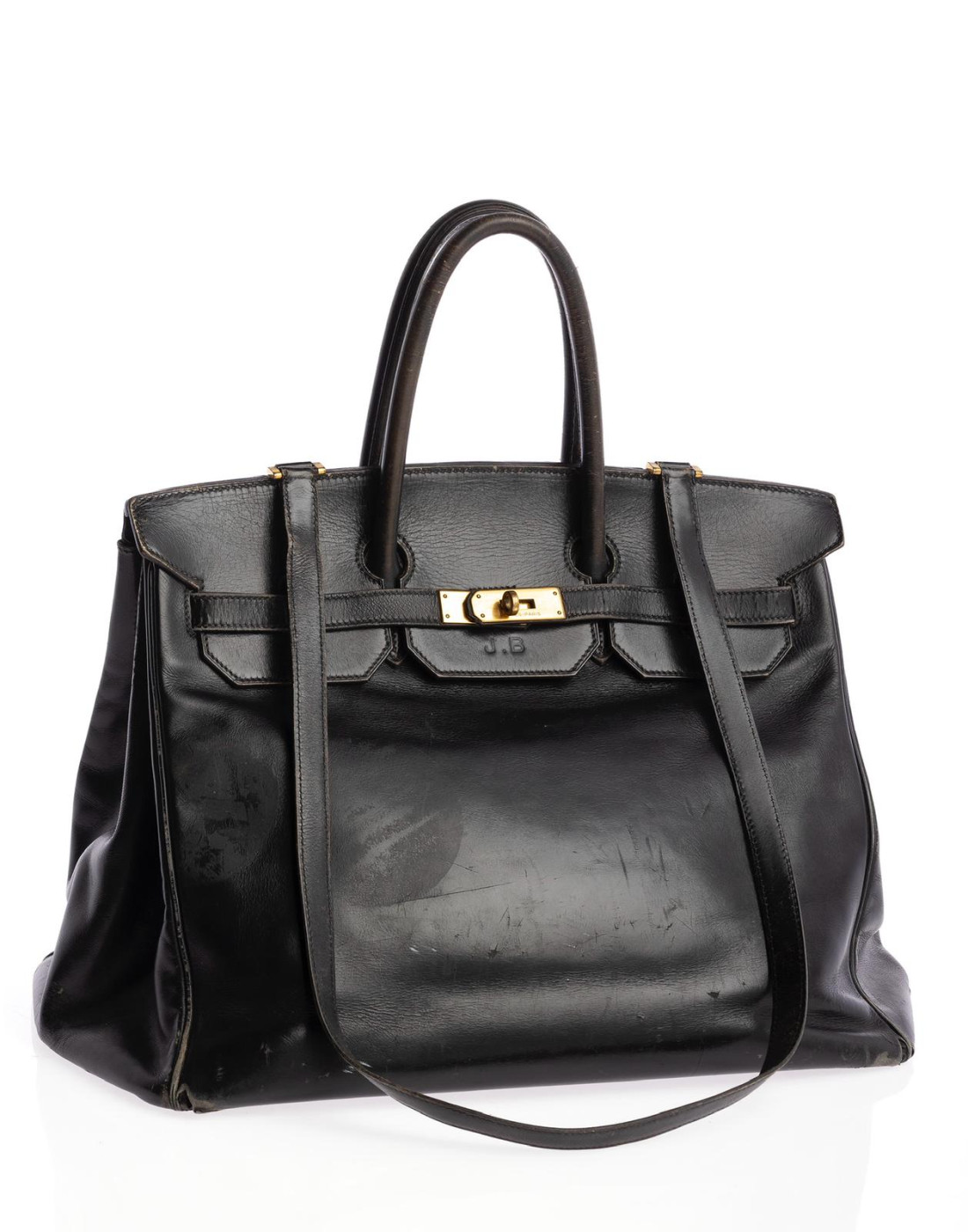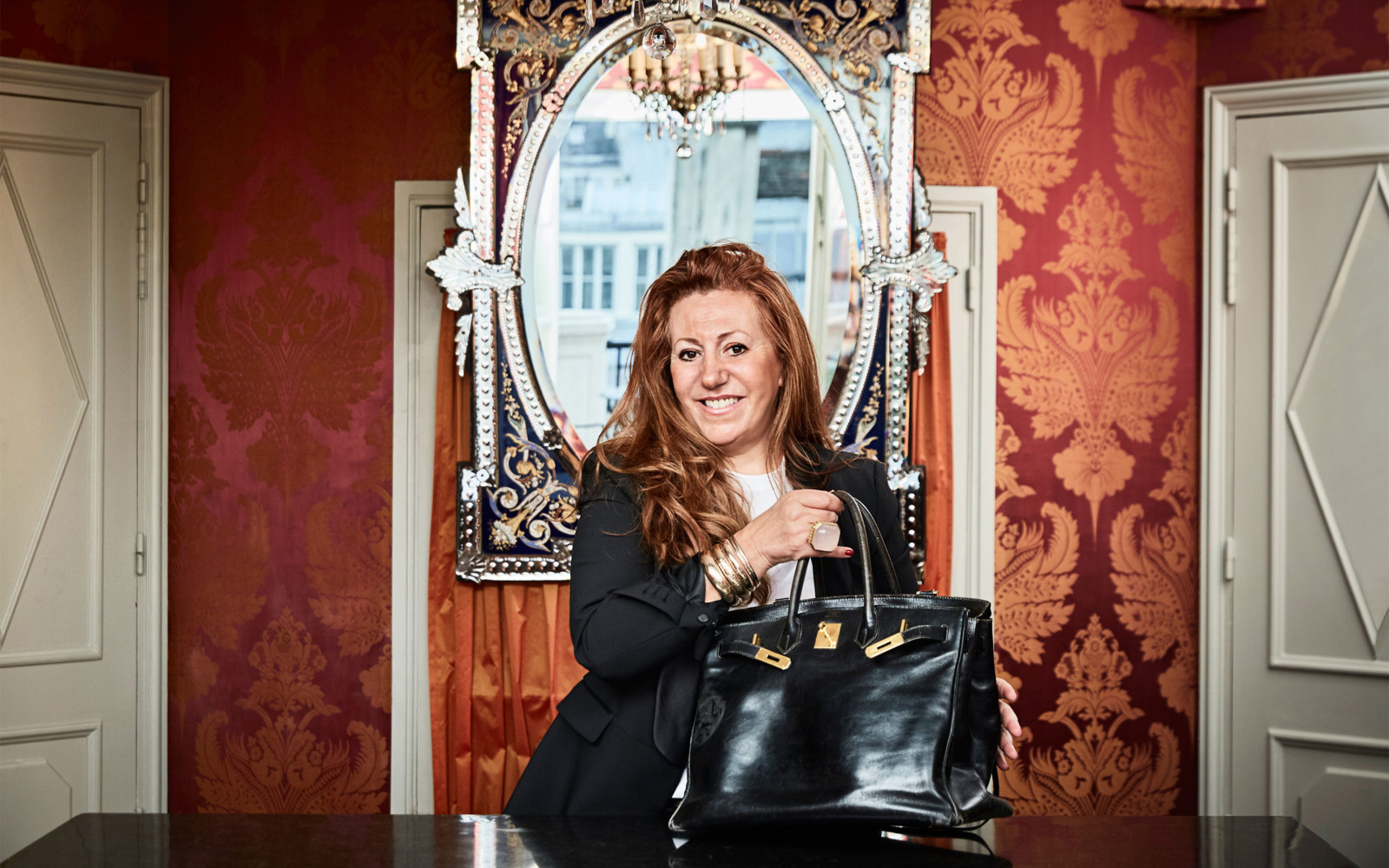

Catherine B: The Story of a Woman and Her Bag
A legend of the Parisian Left Bank, Catherine B (short for Catherine Benier, for those in the know) has been collecting Hermès and Chanel pieces her entire life. Among the most precious in her collection is the very first Birkin bag, which will be auctioned at Sotheby’s in Paris on July 10, following an exhibition from July 3 to 9. In an exclusive interview with HD Fashion, Catherine B shares her story — revisiting a lifetime of fashion treasures and adventures — offers insights into her extraordinary collection, and explains how she acquired this iconic bag, transformed it into a legend, and why she is finally ready to let it go.
Why did you decide to sell the most important bag in your collection—and why now?
I’ve owned this bag for just over 25 years, and I gave myself the mission of turning it into a museum-worthy piece. When I bought it in 2000, I kept it hidden away for quite a while. Then I dedicated myself to making sure it was seen: exhibited in museums, recognised for what it truly is. It went from being an exceptional object to a piece of cultural heritage. Exhibiting the prototype Birkin — the very first one ever made — at institutions like MoMA and the V&A in London gave it the stature it deserved. After all of that, I felt it was time to let someone else take over, to let the bag begin a new journey.
Why now? Because the recent work I did with Sotheby’s — exhibiting it last year in Paris, New York and Hong Kong — was such a phenomenal success. The enthusiasm surrounding the piece was overwhelming. I realised that a major collector might be able to give it a different kind of life, perhaps even exhibit it in new museums. I’ve done everything I could to elevate it. Now it’s time to pass the torch.
It will be sold via Sotheby’s in a traditional auction format, so you don’t know if it will go to a museum or a private collector?
Exactly. You never know. It’s currently on display in New York, and it will later be displayed in Paris before being auctioned live on July 10. Honestly, I never imagined I’d sell it. It’s always been the masterpiece of my collection. I’ve been collecting for 40 years — I have 2,500 Hermès scarves, not to mention the rest of my collection — but this bag was always the crown jewel, because it’s truly one-of-a-kind. I also own the largest collection of Karl Lagerfeld jewellery for Chanel, all worn on the runway in the ’90s by supermodels. I’ve never really talked about it before — maybe it’s time.

Do you remember the auction when you first bought the bag?
Yes, and there were lots of phone bidders. Even though I didn't attend in person, I bid over the phone, quietly. No mobile phones back then, just landlines. It was 25 years ago, the early days of my collecting. I was already well-known in the industry, and dealers often came to me for advice or to offer me special pieces. At the time, most of the people bidding were just looking for an Hermès bag — they didn’t necessarily realise it was a prototype. In fact, the word “prototype” wasn’t even used back then. I began using it when I started exhibiting the bag. I realised: if you want to make something unique, you have to tell a unique story.
Yes, it had been made for Jane Birkin. But the real inspiration was Hermès’ HAC (haut à courroie) travel bags, designed for men. Serge Gainsbourg had one. I don’t think people really understood the historical significance of the bag — and that’s probably why I was able to win it. If they had, I never could have competed against international buyers.
It’s funny, because the bag had already been auctioned once before, right?
Yes. The first sale was in May 1994. At that time, I had just opened my boutique a month earlier, in April. I had no means to invest in such a major piece — my business had only just begun, I opened my boutique Les Trois Marches on the Rue Guisarde in the Saint-Germain-des-Prés neighbourhood. I remember thinking: I wish I could have bought it. Then six years later, the auctioneer called and said: “Catherine, I have something for you — you must come”. And I knew. The bag had come back to France. I placed the winning bid. It just shows — what’s meant for you always finds its way back.
You also kept it in very special conditions — too precious for a normal wardrobe?
Of course. It was kept in a climate-controlled case, like a work of art — not too hot, not too cold, perfectly ambient. And then stored in a secure vault, but I can’t tell you where (smiles).

When did your collection start?
Even before I opened my boutique, I was already collecting. Bags, jewellery, accessories — it had started to take over my apartment in Saint-Germain-des-Prés. One day, I came back from abroad and thought: This collection needs a home. I needed a space to show it, to store it, to trade pieces in and out. That’s how the idea of the boutique was born. I decided to buy a small shop where I could keep part of my private collection, acquire new pieces, and sell what didn’t quite fit.
I’m a vintage fashion dealer by profession, an expert in couture. At first, I bought it from friends and clients. Some pieces I kept, some I sold. In a way, it all started simply because I ran out of room (laughs).
You’ve said your very first piece was a Kelly bag found at a flea market when you were a teenager. How did you know it was authentic?
I’ve always had the eye. Back then, counterfeits came from Italy, and while the Italians are charming, their early fakes were terribly made. They basically screamed, “I’m a fake.” I knew the Hermès details by heart. Back in those days, you couldn’t really go wrong.
And today?
Now it’s an entirely different world. Counterfeiting is a global industry. The fakes are very convincing — high-quality craftsmanship, nearly identical to the real thing. When I was robbed, I searched every resale site for my missing bags. Out of ten listings, six were fakes.
Every day, on Instagram, I get at least 20 DMs from shady Chinese sites offering fakes. I block them immediately. It’s a whole industry. And I can only imagine what Hermès and Chanel are up against — replicating every clasp, strap, lock down to the millimetre. It’s almost an art in itself. Once they get it right, they know they’ll make millions.

Do you think people are tempted because the fakes are cheaper?
I don’t really understand it, and I can’t agree with it. I’d rather own one real piece than ten fakes. When you buy a fake, you’re not buying the story, the craftsmanship, the artisan’s final touch. Buying a Hermès bag is an experience. You’re introduced to the house, the materials, and the savoir-faire.
Hermès began as a saddlemaker. Their bags were made for carrying boots, helmets, and riding gear. That history matters. For me, having fewer things but having them be real — that’s what luxury means.
Do you still collect today? Are you interested in the new Hermès or Chanel collections?
Not really. I was a huge fan of Karl Lagerfeld. And it’s difficult for anyone to step into his shoes. We’ll see what Matthieu Blazy does — he deserves a chance. But at Hermès, I mostly look for vintage pieces. My favourite era is Jean-Paul Gaultier’s time — so imaginative, so desirable. I have a crocodile kilt with straps, a gold-plated Kelly, and vintage hunting blazers. I won’t sell those. I also adore the Jean-Louis Dumas period — he worked with Kermit Oliver, the first American artist to work with Hermès, on some extraordinary scarves. His imagination gave life to some of the most beautiful designs celebrating the United States. Among the most iconic are Pawnee, Laschar, Flora and Fauna of Texas, and The Peony Express, to name just a few. These scarves are now highly sought-after and extremely rare—collectors almost never part with them. Did you know each Hermès scarf colour is applied individually? Some go through the press 200, 300, even 500 times. I have scarves in my collection that are simply unbelievable. I’ll let you know when I decide to sell the 2,500 of them (smiles).
What’s the oldest piece in your collection?
Among the scarves, it’s from 1937: the Faïences Chinoises print. It wasn’t silk then—it was wool gauze. Hermès scarves actually started as coat linings. The oldest one I have isn’t even silk yet. The silk revolution came later, and now an Hermès scarf sells every 30 seconds worldwide. Like the Birkin, it’s something you keep and pass on. It’s a celebratory object — bought for milestones: a first child, a wedding, an anniversary. That’s what people should understand. A Hermès object is a marker of life. And for me, true luxury means something that can be repaired. When a piece is damaged, you return it to the house where it was born. They restore it. That's a real luxury. And most brands can’t offer that anymore.
And your boutique today — why Rive Gauche? And do you still visit?
I only appear now for special interviews or when they want me to participate in a fashion documentary. The boutique still runs quietly, and we have a very nice selection. Why Saint-Germain-des-Prés? Because I was born there. My mother lived there. My great-grandfather, too. The boutique itself used to be a barbershop where he had his shave every Sunday. Afterwards, he’d go play chess in the Luxembourg Gardens. When I was looking for a small space, someone showed me this spot. It needed a lot of work. I brought my father with me, unsure about taking it. He looked around and said, “This was your great-grandfather’s barber”. That was the sign. I believe in signs. I believe that some things are written — and if you’re lucky, they find you.

Courtesy of Catherine B
Text: Lidia Ageeva

